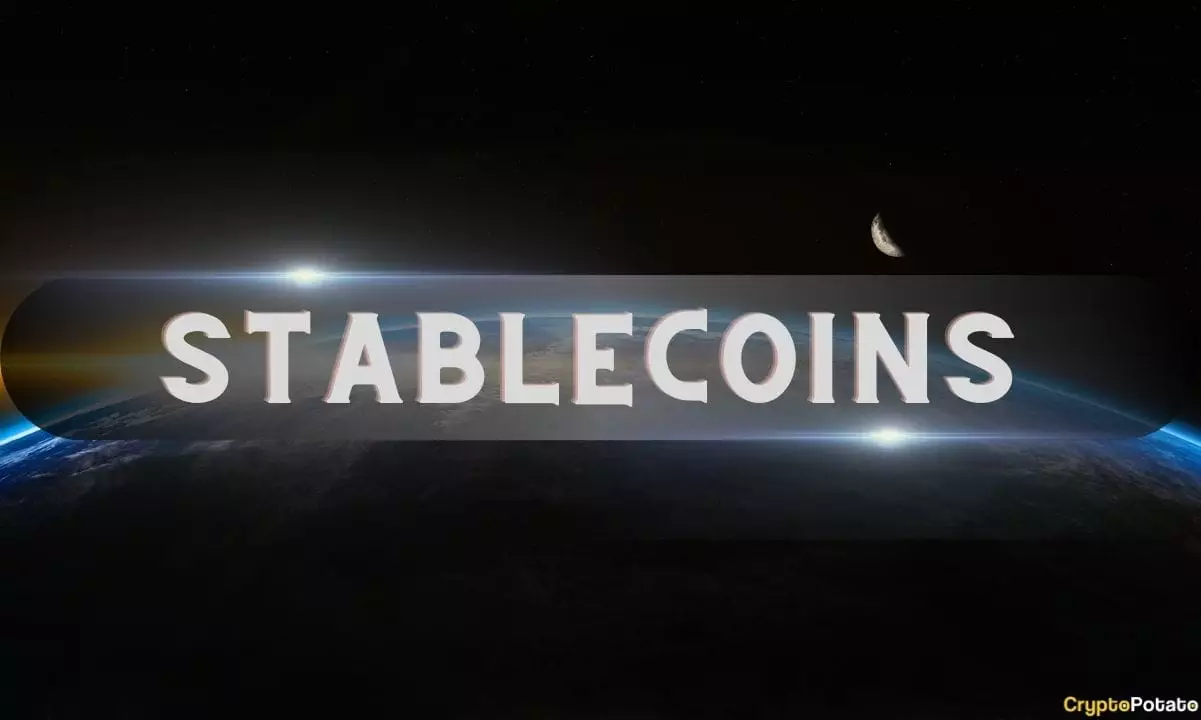The year 2023 proved to be exceptional for digital assets, particularly with the remarkable surge in Bitcoin prices, witnessing a growth of over 172%. This surge, combined with a correction of less than 20%, showcased the resilience and potential of the cryptocurrency market. However, it was not just Bitcoin that experienced positive growth; stablecoins also saw an increase in capital inflows. The market surpassed crucial technical and on-chain pricing models, with October emerging as a pivotal moment for institutional capital movement. This article explores the rising dominance of stablecoins in the digital asset market and their role in transforming market dynamics.
Over the past two years, the market capitalization of global stablecoins has exceeded $100 billion, with Tether (USDT) alone accounting for over $90 billion. This growth can be primarily attributed to the increasing use of stablecoins in applications related to decentralized finance (DeFi), trading, and liquidity management. Despite facing controversy and regulatory pressures, stablecoins have emerged as the “preferred quote currency” for traders and a significant source of market liquidity.
The relative dominance between various stablecoins has undergone significant shifts between 2022 and 2023. Previously rising stablecoins such as USDC and BUSD have witnessed a decline in their dominance. BUSD has even entered redemption-only mode, indicating a change in market dynamics. USDC dominance, on the other hand, has fallen from 37.8% to 19.6% since June 2022. These shifts in dominance highlight the evolving landscape of stablecoins within the digital asset market.
In terms of supply, the aggregate supply of stablecoins has experienced a decline since March 2022, primarily influenced by regulatory pressures and diminishing investor interest during the bear market. However, October 2023 marked a turning point, with total stablecoin supplies hitting a low at $120 billion and starting to grow at a monthly rate of up to 3%. This expansion in supply indicates a likely resurgence of investor interest and a potential revitalization of the stablecoin market.
Stablecoins play a crucial role as a bridge between the crypto and traditional financial systems. Despite the controversies surrounding their operations, stablecoins have gained attention from not only the Biden administration but also bipartisan congressional lawmakers. The issuer of the largest stablecoin, Tether, allocated $760,000 for lobbying efforts in the first three quarters of 2023, doubling its previous year expenditure. Circle Internet Financial, the issuer of USDC, also increased its lobbying spending to $300,000 during the same period. Even crypto exchange Coinbase invested $2 million in lobbying activities, with a specific focus on stablecoins. This attention from regulatory bodies and lawmakers demonstrates the growing recognition of stablecoins as a significant component of the overall financial ecosystem.
As digital assets continue to gain traction and mainstream acceptance, stablecoins have emerged as a dominant force within the market. Their growth, resilience, and role as a bridge between traditional and crypto systems have attracted attention from investors, regulators, and lawmakers alike. Despite the challenges and controversies they have faced, stablecoins have shown remarkable potential and are likely to play a crucial role in shaping the future of the digital asset landscape. As the market moves forward, it will be crucial to monitor the evolving dynamics of stablecoins and their impact on the overall financial ecosystem.


Leave a Reply